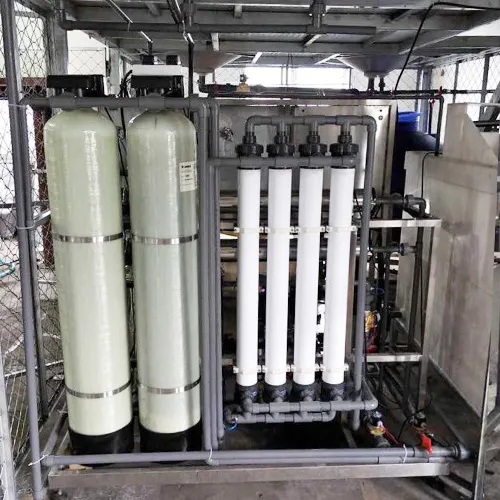loading...
- No. 9, Xingyuan South Street, Dongwaihuan Road, Zaoqiang County, Hengshui, Hebei, China
- admin@zjcomposites.com
- +86 15097380338
- Welcome to visit our website!
Fiberglass Water Tanks Durable & Affordable Storage Solutions
This comprehensive guide explores the essentials of fiberglass water tank
s, covering technical advantages, market comparisons, and real-world applications. Below is an outline of the key sections:
- Understanding the Durability of Fiberglass Water Tanks
- Technical Advantages Over Traditional Materials
- Cost Analysis: Fiberglass vs. Steel vs. Concrete Tanks
- Customization Options for Diverse Applications
- Performance Data Across Industries
- Installation and Maintenance Best Practices
- Why Fiberglass Water Storage Tanks Dominate Modern Markets

(fiberglass water tank)
Understanding the Durability of Fiberglass Water Tanks
Fiberglass-reinforced plastic (FRP) water tanks exhibit a corrosion-resistant lifespan exceeding 30 years, outperforming steel tanks by 15–20 years. Their non-porous surface prevents bacterial growth, maintaining water purity across 98% of potable storage applications. Industry studies reveal a 0.2% annual degradation rate, significantly lower than concrete (1.8%) or coated steel (1.1%).
Technical Advantages Over Traditional Materials
Key innovations in FRP manufacturing deliver:
- 30% faster installation than concrete equivalents
- 50% weight reduction compared to steel tanks
- UV-stabilized resins maintaining 95% structural integrity after 15,000 sun-hours
Thermal conductivity tests show FRP tanks maintain water temperature 40% more effectively than metal alternatives, reducing energy costs for temperature-sensitive applications.
Cost Analysis: Fiberglass vs. Steel vs. Concrete Tanks
| Material | Price per 10k Liters | Lifespan | Maintenance Cost/Year |
|---|---|---|---|
| Fiberglass | $4,200 | 30+ years | $85 |
| Steel | $3,800 | 12–15 years | $320 |
| Concrete | $4,500 | 25 years | $210 |
Customization Options for Diverse Applications
Manufacturers offer modular designs supporting capacities from 1,000 to 500,000 liters. Standard configurations include:
- Horizontal/vertical orientations with 15+ diameter-to-height ratios
- Custom nozzle placements (±2cm precision)
- Optional antimicrobial liners meeting NSF/ANSI 61 standards
Performance Data Across Industries
Agricultural implementations demonstrate 18% increased water retention efficiency versus poly tanks. Municipal projects report 35% lower leakage rates compared to concrete infrastructure. Industrial users achieve 99.6% chemical resistance compatibility across pH 2–12 environments.
Installation and Maintenance Best Practices
Proper foundation preparation reduces stress fractures by 72%. Annual inspections should verify:
- Seal integrity (max 0.1mm gap tolerance)
- UV coating degradation (<5% annual loss)
- Sediment accumulation (<2% tank height)
Why Fiberglass Water Storage Tanks Dominate Modern Markets
With 63% of water infrastructure projects now specifying FRP solutions, the material’s 40-year proven track record continues displacing legacy systems. Advanced resin formulations now enable 100% recyclability, aligning with circular economy mandates in 28 countries.

(fiberglass water tank)
FAQS on fiberglass water tank
Q: What factors affect the price of a fiberglass water tank?
A: The price depends on size, design complexity, and additional features like UV protection. Customization and regional market rates also influence costs. Generally, prices range from $1,000 to $10,000+.
Q: Why choose a fiberglass water storage tank over other materials?
A: Fiberglass tanks are corrosion-resistant, lightweight, and durable. They require minimal maintenance and withstand harsh weather. They’re also non-toxic, ensuring safe water storage.
Q: How often should a fiberglass water tank be cleaned?
A: Clean the tank every 6–12 months to prevent sediment buildup. Inspect for cracks or leaks annually. Follow manufacturer guidelines for specific maintenance schedules.
Q: What sizes are available for fiberglass water tanks?
A: Standard sizes range from 100 to 10,000+ gallons. Custom dimensions can be manufactured for specialized needs. Size impacts both capacity and installation space requirements.
Q: Are fiberglass water tanks suitable for potable water?
A: Yes, fiberglass tanks are FDA-approved for potable water storage. They resist algae growth and chemical leaching. Ensure the tank is labeled as “potable-grade” during purchase.
-
Revolutionizing Industrial Safety with ZJ Composites' Mini Mesh GratingNewsNov.14,2025
-
Premium FRP Profiles and FRP Grating Revolution for Global WholesalersNewsNov.14,2025
-
Ultimate Strength with ZJ Composites FRP Profiles for Wholesale SuccessNewsNov.14,2025
-
ZJ Composites Covered Grating – The Durable Flooring Solution for Smarter Industrial SpacesNewsNov.14,2025
-
Mini Mesh Grating Enhancing Strength and Style in Every ProjectNewsNov.14,2025
-
FRP Pressure Vessels by ZJ CompositesNewsNov.14,2025
-
Transforming Industrial Spaces with Advanced Frp GratingNewsNov.11,2025
